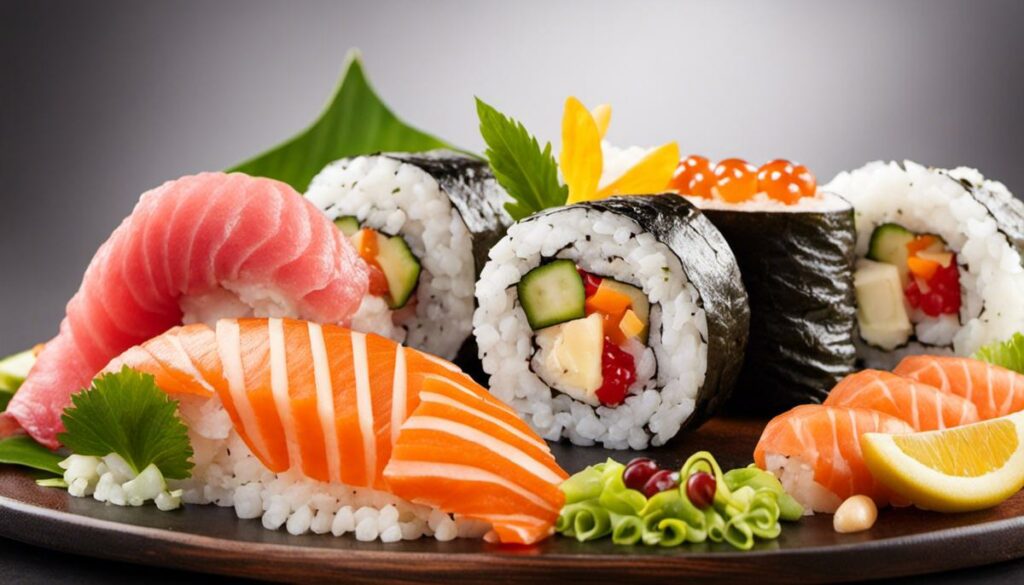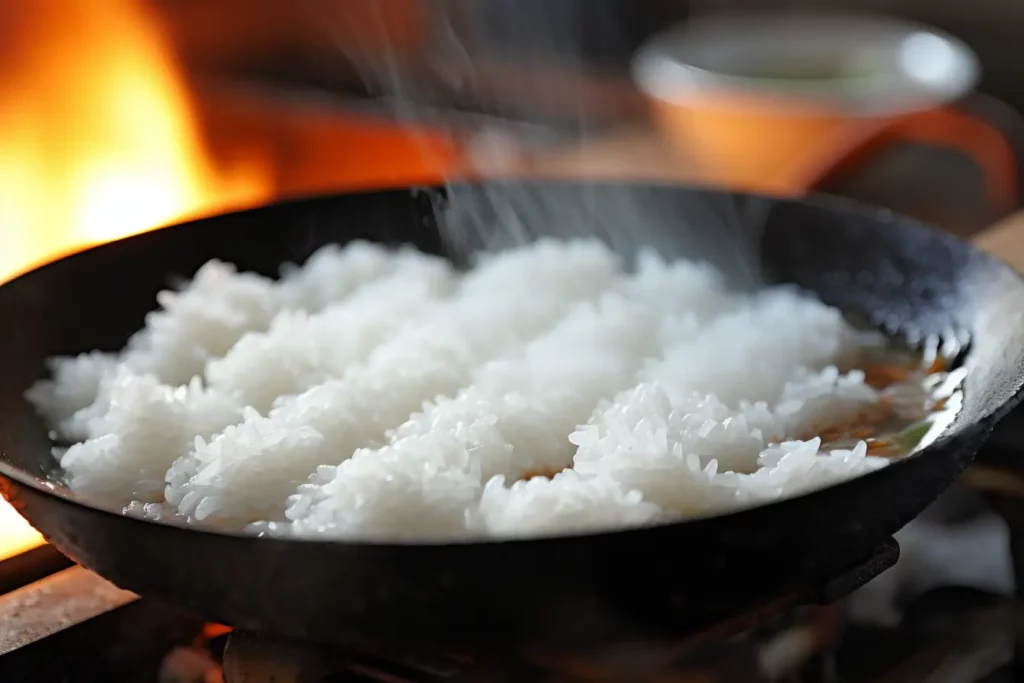In the kingdom of culinary arts, sushi is a splendor that compels suspicious palates to admiration and fascinating lovers to arouse their curiosity. While the original character of sushi emphasizes its simplicity and accuracy, we invite you to innovate beyond the traditional ingredients and take a look at the intoxicating possibilities of sushi recipes with exotic ingredients. Whether it’s tropical abundance, the finest desert delicacies, or ingredients for special dietary needs, these ingredients can deliver a kaleidoscope of flavors and textures and transform the entire sushi experience. So let’s look at the vast universe of possibilities and explore the fascinating secrets of the exotic ingredients in sushi.
Must-Have Exotic Ingredients
Anyone who follows us regularly knows that we have a weakness for the art, creativity, and uniqueness found in sushi recipes. There’s something fascinating about the combination of simple, fresh ingredients carefully and precisely transformed into masterpieces of craftsmanship. Today, we’re going to take a look at some exotic ingredients that play a role in sushi cooking. They may not be standard equipment, but they can add that little bit extra that turns a simple sushi into something extraordinary.
First of all, the yuzu fruit. This citrus fruit from East Asia is rarer than the limes and lemons we are familiar with, but has a unique aroma that adds a hint of seaweed and takes the taste of the sushi to a whole new level.
Black caviar, also known as sturgeon roe, is another exotic ingredient that you can find in luxury sushi restaurants. Its crunchy texture and rich, salty flavor add a luxurious touch to any sushi.
Also popular in avant-garde sushi cuisine is the fugu, or puffer fish. This fish is known for its poisonous interior, but when properly cooked, it is a true delicacy with a delicate, smooth flavor that is a perfect complement to the usual tuna or salmon.
Wasabi root is another gem in sushi preparation that is rarely found in nature. Unlike the traditional wasabi, which is available in powder form, the real wasabi root has a complex, sweet flavor with a spicy note that melts in the mouth and makes the sushi truly stunning.
After all, you can’t discuss the exotic ingredients in sushi preparation without mentioning the oyster mushroom. Often served raw, this mushroom has a meaty texture and a sweet, nutty flavor that perfectly complements traditional sushi ingredients.
In the art of sushi making, there is always room for experimentation and innovation. Whether using traditional or exotic ingredients, the goal is to combine flavors, textures, and visuals to create a unique dining experience. So be brave, be creative and discover the extraordinary possibilities that a simple piece of fish and rice can offer.
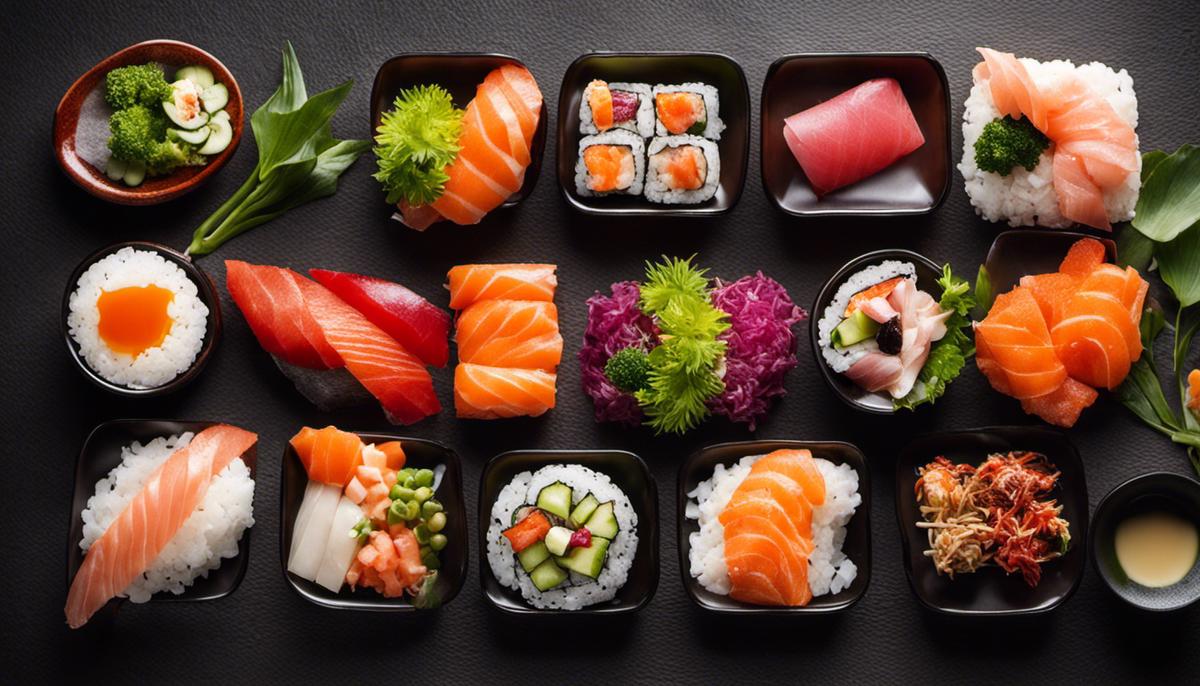
Vegan and gluten-free alternatives
Title: Elegant and Tasty Compositions: Exotic Ingredients for Vegan and Gluten-Free Sushi Alternatives
Our love for sushi knows no bounds. When Japanese cuisine conquered global gastronomy, no one could have guessed that this little delicacy would stimulate the senses in such a way. But what happens when you’re looking for vegan and gluten-free alternatives? Luckily, giving up traditional ingredients doesn’t mean sacrificing taste and aesthetics. On the contrary, it opens up a new world of possibilities and allows us to experiment with exotic and innovative ingredients.
When it comes to flavor, Japanese horseradish, also known as “wasabi,” is often the go-to choice for sushi fans. But there’s a lesser-known ingredient called Ogonori, which is similar to seaweed but with a more subtle flavor. Let yourself be enchanted by the bright color and crunchy texture of this sea vegetable.
The use of tobiko, the bright orange roe of the flying fish, is also an excellent addition to the sushi treats. For a vegan and gluten-free option, avocado could serve as a perfect substitute. It offers a creamy texture and mild flavor that pairs well with other ingredients.
But it’s not just what’s on the sushi, it’s also what’s inside. Here we can replace unagi, or the grilled eel, with the exotic jackfruit. When slow-cooked and mixed with teriyaki sauce, it acquires a meat-like texture and smoky flavor that is sure to delight any sushi lover.
After experimenting with different fillings, let’s not forget about sushi rice. Traditionally, it is seasoned with vinegar, sugar and salt. But why not try the exotic black rice, also known as “forbidden rice”? Its sticky texture and nutty flavor make it the perfect base for any sushi ball.
Vegan and gluten-free sushi doesn’t mean you have to sacrifice taste and aesthetics. It’s simply an invitation to think outside the box and discover new combinations and ingredients that make the love of sushi even more exciting. And as we all know, diversity is the spice of life!
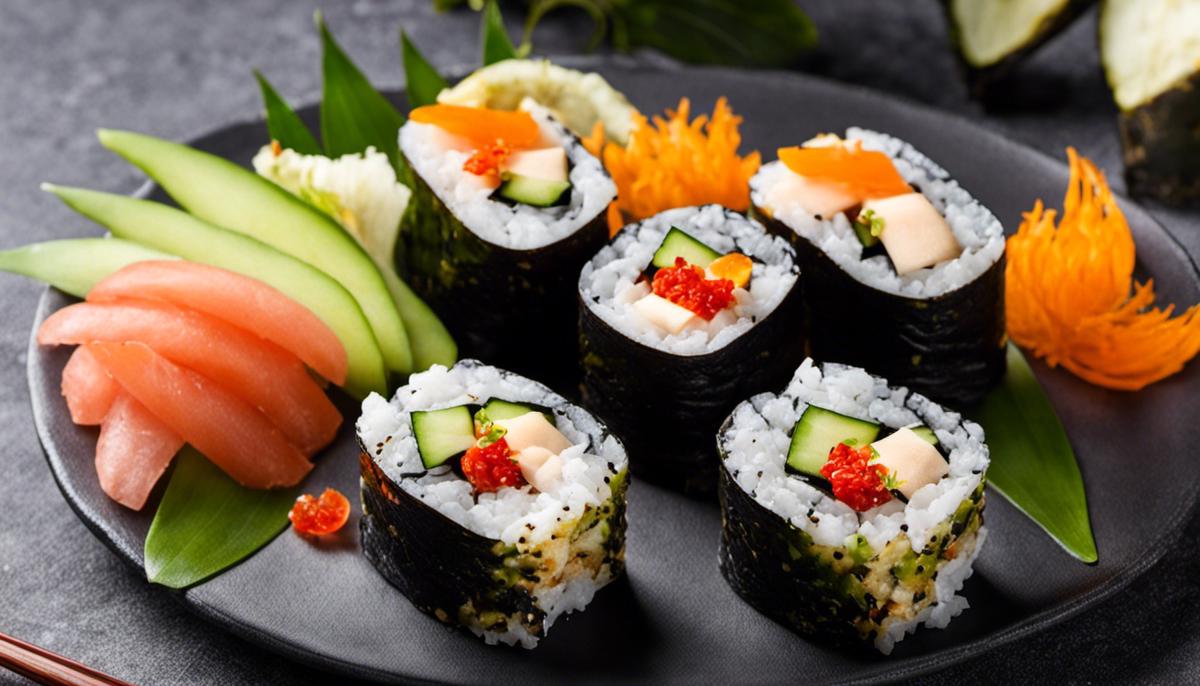
Sushi Accessories with Exotic Ingredients
If you believe that you have already exhausted all the possibilities of sushi preparation, the culinary world never ceases to surprise us with exciting, new ideas. Exotic ingredients are not only a way to expand the arsenal of sushi lovers, but also offer the chance to add an individual touch to each sushi plate.
The search for vegan and gluten-free alternatives is in full swing and leads us to innovative solutions. Ogonori, for example, manages to elevate the textural and flavor complexity of seaweed to a vegan level. This bright green seaweed product is rich in antioxidants and minerals, making it a nutritious, vegan alternative to traditional seaweed.
Tobiko, often used as a crunchy, flavorful element in many types of sushi, is now also getting a vegetarian version. While real tobiko is made from fish roe, vegan sushi enthusiasts can now resort to alternatives such as bladderwrack or other sea vegetables that achieve a similar taste and texture.
But exotic alternatives aren’t just limited to vegan sushi. Unagi, the traditional grilled eel, has found a worthy substitute in jackfruit . Cooked and seasoned, jackfruit can provide an amazingly similar texture and flavor to unagi, making an impressive accent on any sushi tray.
Another trend in the sushi world is the use of black rice. This special rice gives each sushi roll an intense, nutty flavor and an unusually appealing color. With its high antioxidant content, black rice is not only beautiful to look at, but it also has excellent health benefits to offer.
We are invited to discover the diversity of sushi and there is no better way to do that than by trying new combinations and ingredients. From jackfruit unagi to black rice, exotic and innovative ingredients open up a whole new world of possibilities in sushi creation. In this way, the enjoyment of sushi always remains an exciting experience, both visually and in terms of taste!
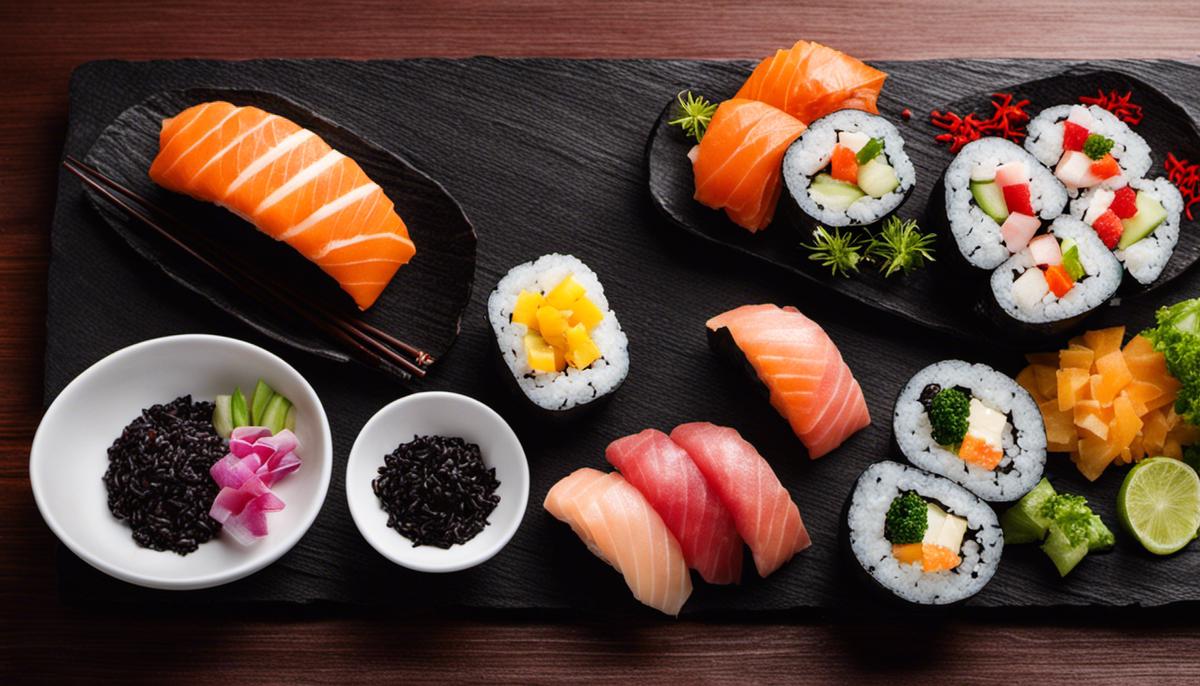
Recipe ideas and inspirations
It is always fascinating how we constantly reinvent ourselves and thus master our own culinary path. The possibilities are endless, especially when it comes to a dish like sushi, which is so versatile. It’s always exciting to push the established boundaries of the traditional and venture into the uncharted territories of unexplored tastes and textures.
An example? Lilamais, the vibrant color contrast and its unique texture makes it an unconventional but tempting sushi ingredient. Pairing with shiitake mushrooms, gives an exceptional flavor and gives the whole an earthy note.
Another exciting aromatic experience will delight with the use of kombu. However, a seaweed traditionally used to make dashi, the Japanese broth, brings an intense and spicy flavor to the sushi palette. Kombu can be boiled and then finely chopped and poured directly into the sushi roll, which complements the aromas and flavor beautifully.
In addition, the less commercially available seafood, such as the sea dragon, make us sit up and take notice. With its sweet, mild flavor and feather-light texture, it’s an excellent way to add variety to our sushi adventures.
Let’s not forget to focus on ingredients that bring a rich palette of colors to the plate. Just as micro-green as watercress, beetroot sprouts or mustard sprouts, which add an extra dimension to both the presentation and the taste of the sushi with their intense peppery character.
And then there’s Ingefära, the fermented red ginger variety, which is quite different from the usual pink variety. It’s sweet but not spicy, and adds a touch of subtle flavor and color to your sushi.
Experimentation is key to an inspiring sushi experience – whether it’s swapping out ingredients or adding new components. It’s about pushing the culinary boundaries, appealing to the creative mind, and ultimately creating a unique and personal sushi experience. Enjoy your meal!
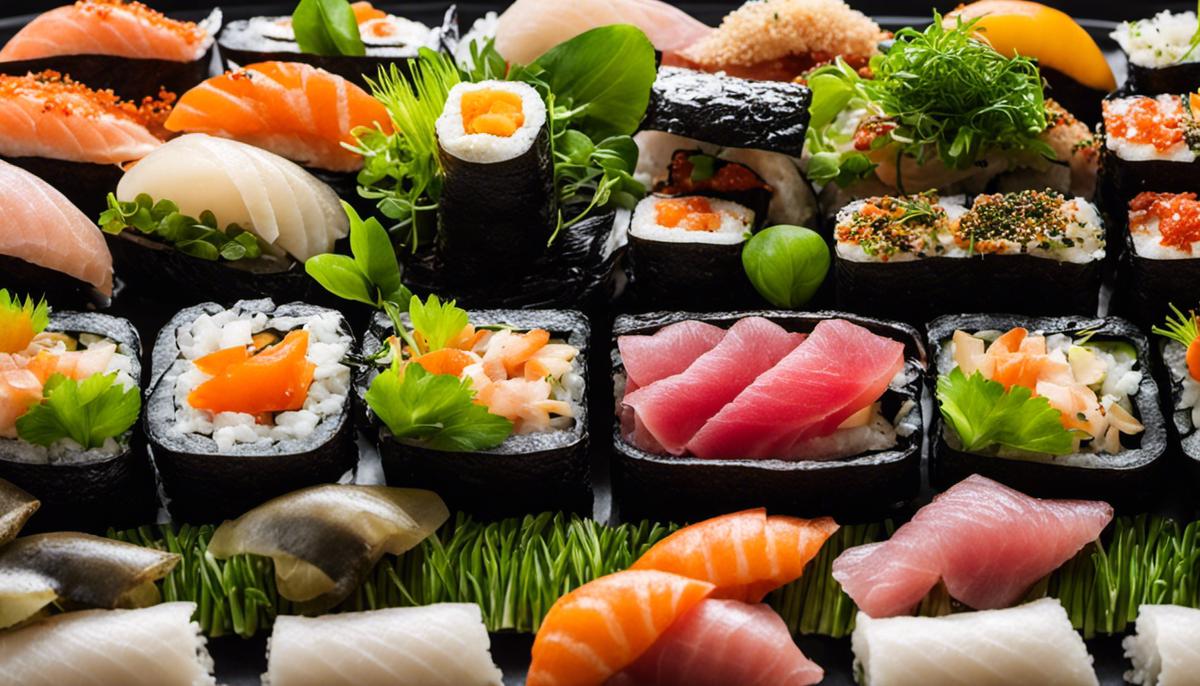
This is the end of our journey through the fascinating world of sushi with exotic ingredients. We have studied the main players, the indispensable exotic spices and the opportunities they offer us. In addition, we have recognized the importance of a healthy and well-tolerated diet and methods to redesign the sushi experience with various accessories. Most recently, we have seen how to put these concepts into practice by trying unique and inspiring gastronomic ideas. It’s now up to you to push the boundaries of what’s possible and harness the magic that exotic ingredients can bring to your sushi creations.
